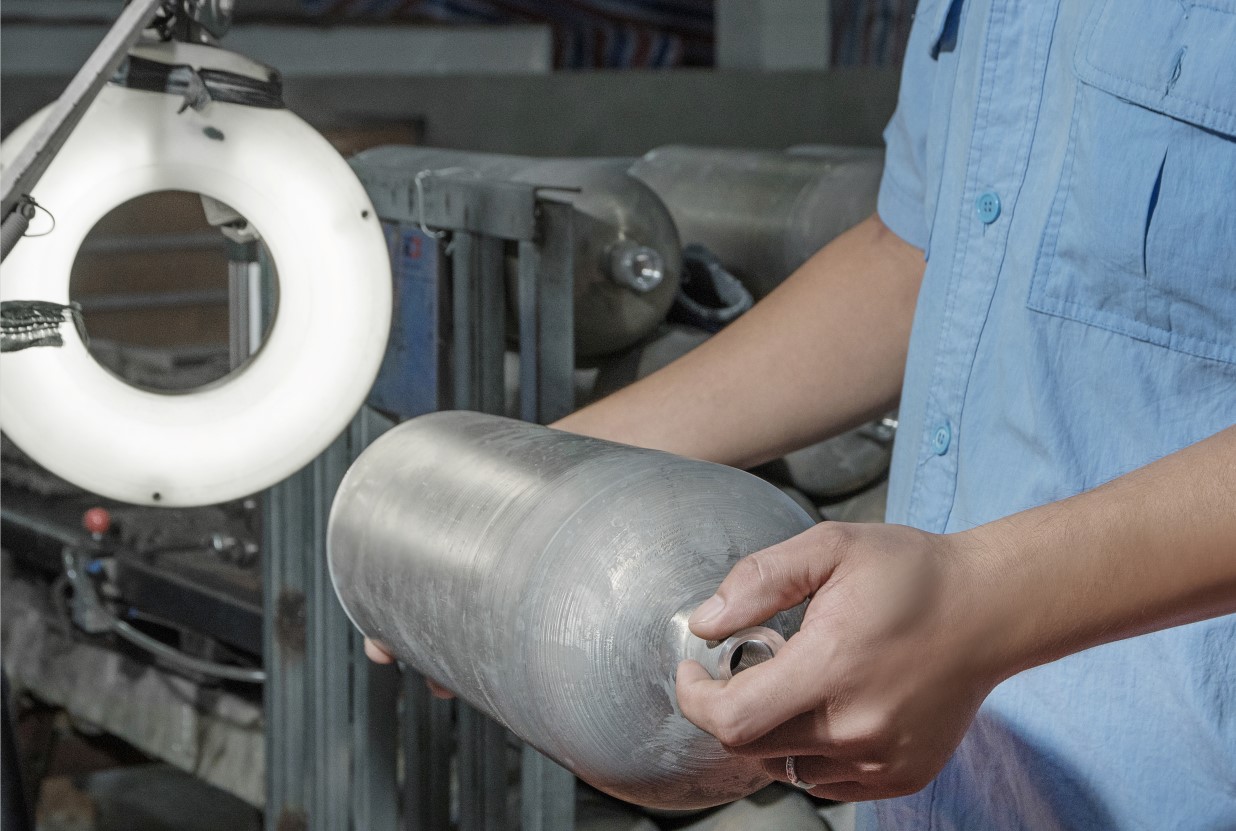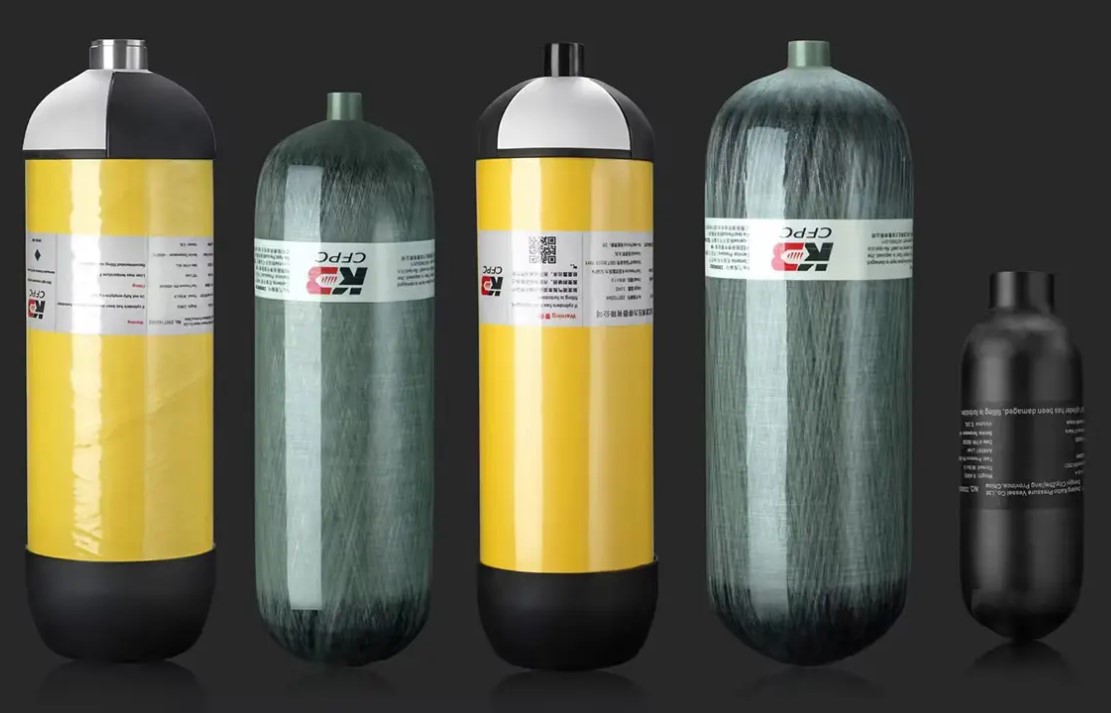The development of Self-Contained Breathing Apparatus (SCBA) systems has been a significant breakthrough in providing safety for individuals operating in hazardous environments. Central to the efficiency and effectiveness of these systems is the use of carbon fiber cylinders. Renowned for their strength, lightweight properties, and durability, these cylinders have become a vital component in the field of emergency response, firefighting, and industrial safety. This article delves into the manufacturing process of carbon fiber cylinders, explores their lifespan and maintenance requirements, and examines innovations and future trends in this technology.
The Manufacturing Process of Carbon Fiber Cylinders for SCBA Systems
Composite Materials Used
The manufacturing process of carbon fiber cylinders begins with the selection of high-quality materials. The primary component is carbon fiber, a material composed of extremely thin fibers made predominantly of carbon atoms. These fibers are woven together to create a fabric that is both lightweight and incredibly strong. The carbon fiber fabric is then combined with a resin matrix, typically epoxy, to form a composite material. This composite is crucial as it provides the structural integrity needed to withstand high pressures while maintaining a low weight, which is essential for user mobility and comfort.
Winding Techniques
Once the composite materials are prepared, the next step involves the filament winding process. This is a precise technique where the carbon fiber fabric is wound around a mandrel—a cylindrical mold—using automated machinery. The winding process involves layering the fibers at various angles to maximize the strength and rigidity of the finished product. The mandrel rotates as the fibers are applied, ensuring even distribution and uniformity in thickness.
The winding patterns can vary depending on the specific requirements of the cylinder, such as pressure ratings and intended use. Typical winding patterns include helical, hoop, and polar windings, each offering different structural benefits. After winding, the cylinder undergoes a curing process, where it is heated to solidify the resin and create a rigid structure.
Quality Assurance Measures
Quality assurance is a critical aspect of manufacturing carbon fiber cylinders for SCBA systems. Each cylinder must undergo rigorous testing to ensure it meets safety and performance standards. Non-destructive testing methods, such as ultrasonic inspection and X-ray imaging, are employed to detect any internal flaws or inconsistencies in the material. These inspections help identify issues like voids, delaminations, or weak spots that could compromise the cylinder’s integrity.
Additionally, hydrostatic testing is conducted to verify the cylinder’s ability to withstand its rated pressure. This test involves filling the cylinder with water and pressurizing it to a level higher than its normal operating pressure. Any deformation or leakage during this test indicates a potential failure point, leading to the rejection of the cylinder. These quality assurance measures ensure that only safe and reliable cylinders reach the market.
The Lifespan and Maintenance of Carbon Fiber Cylinders in SCBA Equipment
Lifespan Expectations
Carbon fiber cylinders are designed to offer a long service life, typically ranging from 15 to 30 years, depending on the manufacturer and usage conditions. This extended lifespan is due to the material’s inherent resistance to environmental degradation, corrosion, and fatigue. However, the lifespan of these cylinders can be influenced by factors such as exposure to extreme temperatures, physical damage, and the frequency of use.
Maintenance Requirements
To ensure the continued safety and performance of carbon fiber cylinders, regular maintenance and inspections are necessary. The most critical maintenance practice is periodic hydrostatic testing, which is usually required every five years. This testing confirms the cylinder’s ability to hold pressure and reveals any potential weaknesses or damage.
In addition to hydrostatic testing, visual inspections should be conducted regularly. These inspections involve checking for signs of wear, abrasions, dents, or any surface damage that might compromise the cylinder’s integrity. It’s essential to inspect both the exterior and interior surfaces, as even minor damage can lead to catastrophic failure under high pressure.
Best Practices for Extending Usability
To extend the lifespan and usability of carbon fiber cylinders, users should adhere to best practices such as:
1.Proper Handling and Storage: Cylinders should be handled carefully to avoid physical impacts and stored in a cool, dry place away from direct sunlight and corrosive chemicals.
2.Regular Cleaning: Keeping the cylinders clean prevents the buildup of dirt and contaminants that can cause damage over time.
3.Following Manufacturer Guidelines: Adhering to the manufacturer’s guidelines for use, maintenance, and testing ensures the cylinders remain in optimal condition.
By implementing these practices, users can maximize the lifespan of their carbon fiber cylinders and maintain their safety and performance.
Carbon Fiber Cylinder Technology: Innovations and Future Trends in SCBA Systems
Advanced Composite Materials
The future of carbon fiber cylinder technology lies in the development of advanced composite materials. Researchers are exploring new resins and fiber blends to enhance the mechanical properties of the cylinders further. For instance, incorporating nanoparticles into the resin matrix can improve the material’s strength, thermal resistance, and fatigue life, allowing for even lighter and more durable cylinders.
Additionally, the use of hybrid fibers, such as combining carbon fiber with Kevlar or glass fibers, offers the potential for creating cylinders with tailored properties for specific applications. These advancements could lead to cylinders that are not only stronger and lighter but also more resistant to impact and environmental stressors.
Smart Sensors and Integrated Monitoring Systems
One of the most exciting trends in carbon fiber cylinder technology is the integration of smart sensors and monitoring systems. These innovations allow for real-time tracking of cylinder performance, including pressure levels, temperature, and usage duration. By providing users with immediate feedback, these systems enhance safety by alerting them to potential issues before they become critical.
For example, a cylinder equipped with smart sensors can notify users if the pressure drops below a safe threshold or if the cylinder is exposed to extreme temperatures that could compromise its integrity. Such features are particularly beneficial for emergency responders who rely on SCBA systems in life-threatening situations.
The Impact of Technology on SCBA Systems
As technology continues to evolve, the role of carbon fiber cylinders in SCBA systems will become increasingly significant. These advancements will likely lead to the development of more efficient, user-friendly, and safer SCBA systems. Furthermore, the emphasis on lightweight and durable materials will enable emergency responders and industrial workers to perform their duties with greater mobility and comfort, ultimately enhancing their overall effectiveness in hazardous environments.
Conclusion
Carbon fiber cylinders have revolutionized SCBA systems by offering lightweight, durable, and reliable solutions for storing compressed air. Understanding the manufacturing process, lifespan, and maintenance requirements of these cylinders is essential for ensuring their continued safety and performance. As innovations in composite materials and smart technology emerge, the future of carbon fiber cylinders looks promising, with the potential to significantly enhance the capabilities of SCBA systems. By staying informed about these advancements and adhering to best practices, users can ensure their equipment remains effective in protecting lives in hazardous situations.
Post time: Jul-31-2024



